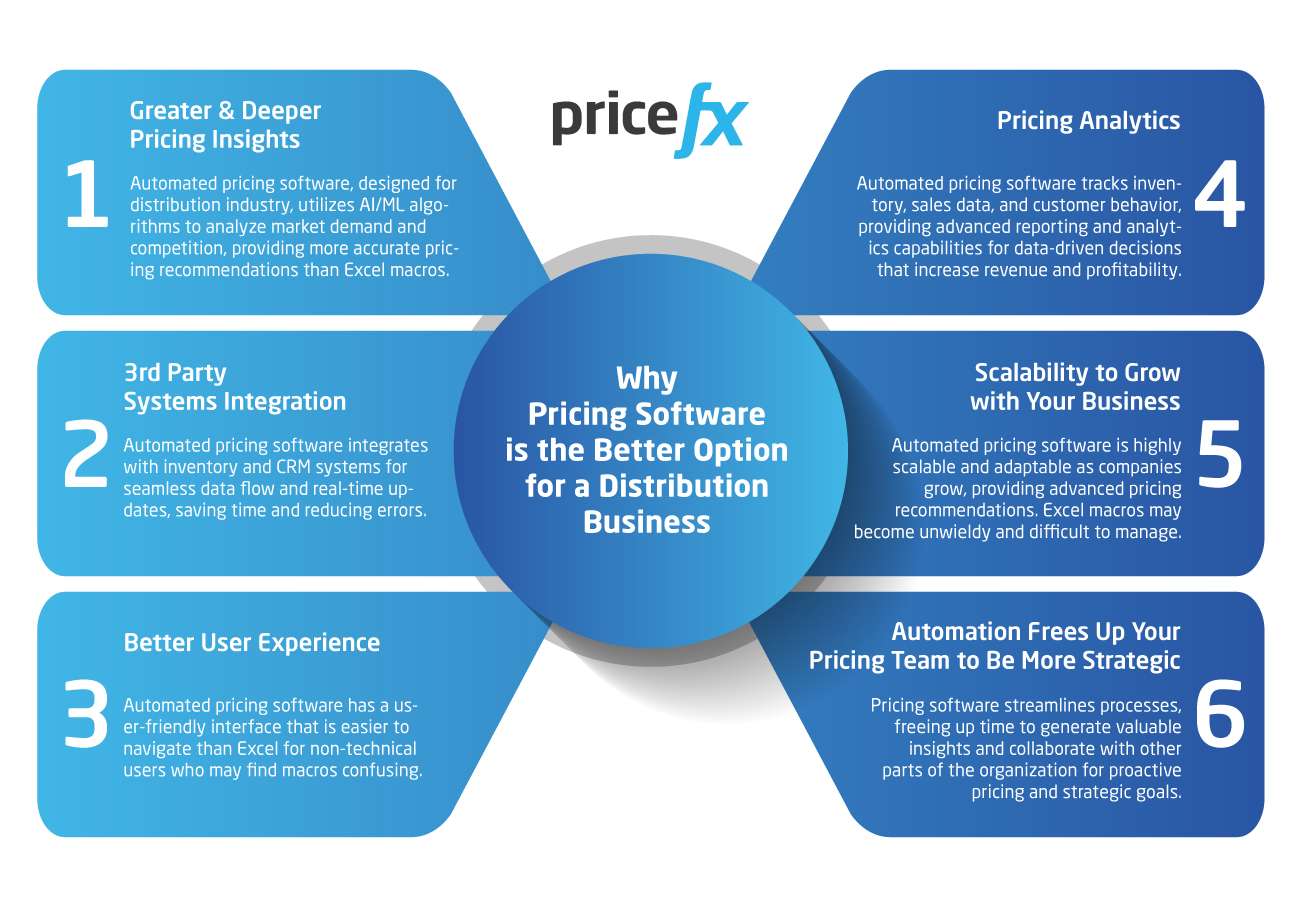Distribution Industry: Best Practice Customer Segmentation
September 26th, 2023 | 8 min. read
In the labyrinth and unique vastness of the distribution industry, where serving an extensive customer base is the norm, the pain of undifferentiated strategies reverberates like an echoing gong. Imagine the struggle of having hundreds of thousands, even millions, of customers all treated with a one-size-fits-all approach. This peanut butter spread of generalized pricing, marketing, and customer service might seem the only option in the absence of effective segmentation. Yet, lurking in the shadows is a nagging unease – the inefficiency in pricing, the missed opportunities in marketing, and the subtle erosion of customer satisfaction that comes from offering the same experience to everyone. But here is the game-changer: customer segmentation. The pain of undifferentiated strategies can only be healed by the strategic power of customer segmentation. Imagine a harmony of efficiency, the symphony of satisfied customers, and the melody of optimized profits.
For more than a decade, Pricefx has been dedicated to supporting numerous clients in the distribution industry. Our focus has been on aiding them to make well-informed pricing decisions driven by data and real-time insights. Through this journey, we have not only helped safeguard their profits but also guided them in their transition towards becoming agile and efficient organizations, primed for optimal pricing strategies.
In this article, we will delve into understanding why customer segmentation can be your best friend as a profitable distributor and the key considerations for effective customer segmentation. We will also analyze the challenges you might strike along the way and of course, how pricing software can tie up all the loose segmentation ends and transform your distribution organization into a lean, efficient, and customer-friendly entity.
What is Customer Segmentation Exactly?

Customer segmentation involves dividing a distributor’s customer base into distinct groups based on characteristics, behaviors, or traits.
This is the solution that allows you to tailor your pricing, marketing, and services with laser precision. Imagine the harmony of efficiency, the symphony of satisfied customers, and the melody of optimized profits.
Understanding the Power of Customer Segmentation
Customer segmentation is more than just a buzzword – it is a strategic imperative that yields a multitude of benefits for distributors. Consider its power on the following:
The Power of Customer Segmentation on Pricing Strategy
By categorizing customers into segments, distributors can discern the diverse willingness-to-pay levels and purchase preferences of each group. This knowledge enables them to optimize pricing strategies for different segments, reaching customers in the most impactful way possible.
The Power of Customer Segmentation on Your Business Goals
Furthermore, targeted marketing strategies driven by customer segmentation often result in higher conversion rates, increased sales, and consequently, elevated revenue.
The Power of Customer Segmentation on Customer Satisfaction
When customers feel understood and valued, they are more likely to make purchases. Additionally, segmentation grants distributors a competitive edge by allowing them to offer tailor-made solutions and experiences that resonate with specific customer groups. This market differentiation can lead to increased customer loyalty and a fortified position in the industry.
Key Considerations for Effective Customer Segmentation
Distributors wield a palette of factors to paint the mosaic of customer segments:
Customer Types
One crucial facet in our quest for effective customer segmentation is considering the diverse customer types. Each customer profile typically carries an assigned type, such as OEM (Original Equipment Manufacturer) or CM (Contract Manufacturer). These distinctions hold immense significance as they guide our strategies. An OEM customer, for instance, would exhibit unique purchasing behaviors and requirements compared to a design house represented by a CM customer. This variation in purchasing frequency and volume logically necessitates distinct pricing strategies tailored to each segment.
Customer Location as a Customer Type
Factoring in customer location is a classic consideration in both distribution and retail strategies. For instance, regional pricing variations are common, catering to the unique economic dynamics of different areas. Take the example of a customer in Florida compared to one in Seattle; the willingness to pay can differ significantly due to local market factors such as regional employment disparities, climate, population size etc.
This dynamic pricing approach serves as a key strategy to optimize profitability, ensuring that your pricing aligns with the value customers perceive, ultimately maximizing your returns.
Customer Lifecycle as a Customer Type
Customer lifecycle can also prove pivotal. Imagine a scenario where a fresh-faced customer enters your system, full of curiosity and potential. You may recognize that this newcomer deserves a distinct segment, separate from your cherished legacy customers who have been loyal to you for ages. This approach is not just a marketing tactic; it is a way to fine-tune how you interact with each group.
For the newcomers, you might deploy a more precise marketing strategy, carefully aligning it with their specific product preferences. But do not stop there – put the customer lifecycle under the spotlight, recognize its importance in shaping how you tailor our services.
By taking this comprehensive approach, you ensure your strategies cater to the unique stages of each customer’s journey, ultimately leading to higher satisfaction, better engagement, and a deeper connection.
Customer Spend as a Customer Type
Unlike the retail industry, in the distribution industry, loyalty programs are not often discussed, but they are seamlessly integrated into our customer segmentation strategy. Consider giving careful thought to these aspects as a significant factor is the customer’s impact on your profitability and their spending patterns.
This may lead you to categorize customers into different tiers (Tier 1, Tier 2, Tier 3, Tier 4 for example), which is a key element for success based not only upon their spending but also their profitability.
For instance, a customer might fall into what you might call “tier one” due to their substantial spending, but once you analyze the margins, you may realize that their profitability is not as high.
This dynamic interaction between spending and profitability can guide your segmentation decisions, allowing you to align your strategies with the unique needs and value that each customer brings to your distribution business.
Channel Preferences
For example, in your distribution industry organization, some of your customers may lean towards online purchasing (yes, even in the B2B sector), while others prefer the in-store experience. Profitability and growth potential analysis is a compass for allocating resources where they will generate the most value. The competitive landscape provides insights into market gaps and opportunities, while customer behavior in response to pricing strategies can shape your segmentation criteria.
Challenges on the Road to Segmentation Mastery
As distributors traverse the path of segmentation, they encounter a host of challenges:
- Data availability and quality – Accurate and comprehensive data is vital for effective segmentation. Yet, distributors often grapple with gathering and maintaining robust data on customer demographics, preferences, and behaviors.
- Data Integration – Integrating data from disparate sources poses another challenge. The integration of data across various platforms can be complex and time-consuming.
- Sample Sizes – Small sample sizes in certain segments can hinder statistical significance, while segment overlap complicates targeted marketing efforts.
Striking the balance between meaningful segmentation and practicality is an ongoing puzzle. As markets shift, distributors must adapt their segmentation strategies to remain pertinent, adding a layer of dynamic complexity. Regular segment maintenance demands resources and effort to ensure alignment with changing customer dynamics.
Harnessing Pricing Software: A Game-Changer for Distribution Segmentation

Pricing software emerges as a knight in shining armor amidst the labyrinth of customer segmentation.
Pricing Software offers a range of benefits, from data centralization to dynamic pricing capabilities:
- By integrating data sources, pricing software provides a panoramic view of customer interactions, driving strategic decision-making.
- The segmentation and clustering algorithms present in many pricing software solutions can seamlessly group customers based on purchasing patterns, frequency, preferences, and location.
- The customizable segmentation criteria enables distributors to design segments that align with their business goals. Customer profiling capabilities aggregate purchase history, preferences, and behaviors into detailed profiles.
- Pricing software analyzes customer responses to discounts, promotions, and price sensitivity, enhancing the understanding of customer behavior.
And overall, the real-time insights and scenario planning functionalities that pricing software allows for empowers distributors to adapt swiftly to evolving markets.
Your Efficiency, Profitability, and Satisfaction Gains
The benefits reaped from pricing software are substantial. Automated segmentation expedites the process, centralizing customer data for streamlined management. Real-time insights equip distributors with timely decision-making capabilities, while dynamic pricing optimizes revenue. The profitability analysis and promotion effectiveness assessments enable distributors to fine-tune their strategies for optimum results. Dynamic markets necessitate continuous refinement, a task made more manageable with pricing software like that offered by Pricefx.
Want to dig deeper and learn more specifically of how Pricefx could potentially assist your distribution business?
Check out this handy article below to learn the top ways that Pricefx can assist you in navigating the ever-evolving distribution landscape with strategic and profitable finesse:
Happy Pricing!
